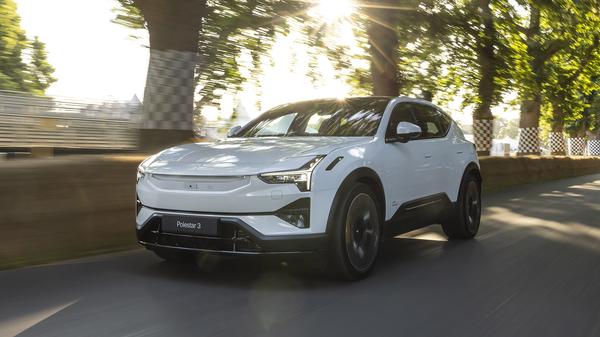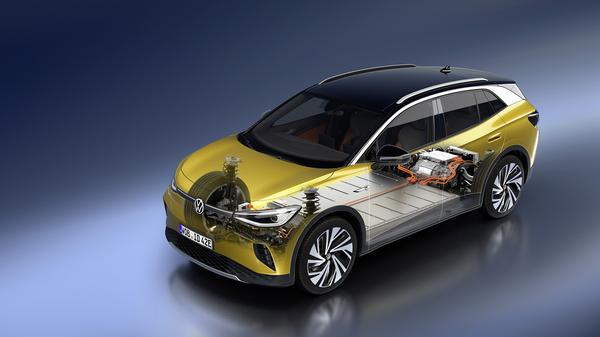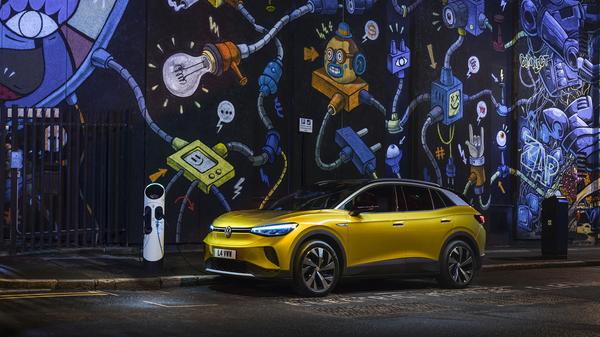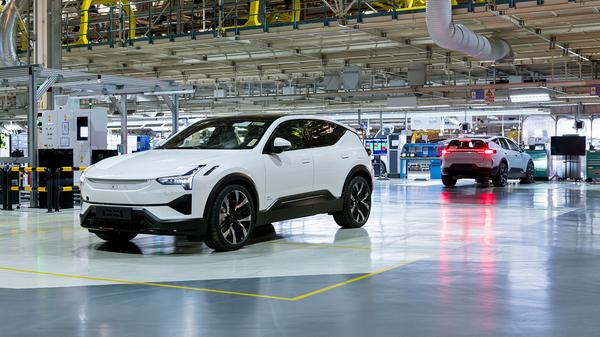News
Sustainability Newsletter – May 2024
Lithium is key in the production of electric car batteries, but where does it all come from and at what cost?


Words by: Erin Baker
Published on 8 May 2024 | 0 min read
It took humans several hundred thousand years to wake up to the value of one of the planet’s oldest elements; lithium, but now we have, there’s no stopping our unquenchable need for it. The rush for white gold, as lithium is now called, is a global race, because it is sorely needed in batteries, which power everything from mobiles to laptops to, yes, electric cars. The irony, of course, is that demand for batteries, and therefore lithium, is driven by the need to wean ourselves off fossil fuels in order to slow the harm we’ve done to the planet. But in order to meet this insatiable need for it, alongside that of graphite and nickel, we’ve got to drag, blast or suck it out of the ground, and we don’t fully know yet the damage that is causing. One study last month suggested that to meet the demand in 2035 for lithium, graphite and nickel, we need to open 384 new mines. Hum.
Or, as far as lithium is concerned, we can alternatively extract it from brine, particularly the huge salars (evaporation and extraction ponds) in the Atacama desert in Chile. Except, no one knows exactly what the consequences will be of disturbing huge sinks of this brine that has lain dormant, miles below the earth’s crust, for millennia, pumping it up to the surface using fresh water, and letting it evaporate. Doesn’t sound ideal (and we can begin to see some consequences for local populations and flamingoes, as nearby stretches of water begin to shrink.) And if all that sounds a long way off, on another continent, well, there’s a good seam of lithium in Cornwall, both in the rock and the geothermal water, and Cornish Lithium, a company employing 20, is currently exploring both the mining and extraction of this lithium, with Government funding. So what are car companies doing about this? They talk a lot about conducting lifecycle studies of their carbon footprints, having oversight of the entire upstream supply chain, controlling scope-one emissions, only using responsible suppliers and so on, and it sounds good to consumers on the hunt for an electric car from a brand that cares about the planet and is doing all it can to eliminate unscrupulous suppliers and ethically bad practice.
Or, as far as lithium is concerned, we can alternatively extract it from brine, particularly the huge salars (evaporation and extraction ponds) in the Atacama desert in Chile. Except, no one knows exactly what the consequences will be of disturbing huge sinks of this brine that has lain dormant, miles below the earth’s crust, for millennia, pumping it up to the surface using fresh water, and letting it evaporate. Doesn’t sound ideal (and we can begin to see some consequences for local populations and flamingoes, as nearby stretches of water begin to shrink.) And if all that sounds a long way off, on another continent, well, there’s a good seam of lithium in Cornwall, both in the rock and the geothermal water, and Cornish Lithium, a company employing 20, is currently exploring both the mining and extraction of this lithium, with Government funding. So what are car companies doing about this? They talk a lot about conducting lifecycle studies of their carbon footprints, having oversight of the entire upstream supply chain, controlling scope-one emissions, only using responsible suppliers and so on, and it sounds good to consumers on the hunt for an electric car from a brand that cares about the planet and is doing all it can to eliminate unscrupulous suppliers and ethically bad practice.

So, to put it to the test, Auto Trader asked two car brands, at each end of the spectrum, whether the lithium in their cars’ batteries was mined or extracted from brine, and whether they even knew with any degree of certainty where the lithium comes from, and also whether they were trying to get greater clarity, or not.
At one end of the range lies Volkswagen Group, a huge legacy car maker with a history embedded in the internal combustion engine, which is transitioning en mass, to electric. At the other end lies Polestar, almost a start-up electric-car brand, born with a zero-carbon spoon in its mouth, keen to embed sustainability in its DNA. Volkswagen came back first. Critically, it joined the The Responsible Lithium Partnership, an on-the-ground-project in 2021 involving indigenous communities, governmental organizations, mining companies and others to gain common understanding of the Atacama salar’s state regarding water (risks, impacts and opportunities), and develop a plan “to ensure improved long-term governance of natural resources in the Salar de Atacama”. The project looks at how to address water management issues collaboratively with a range of stakeholders in a complex territory such as the Salar de Atacama. BMW, Mercedes-Benz, Fairphone and VW group are all stake holders.
At one end of the range lies Volkswagen Group, a huge legacy car maker with a history embedded in the internal combustion engine, which is transitioning en mass, to electric. At the other end lies Polestar, almost a start-up electric-car brand, born with a zero-carbon spoon in its mouth, keen to embed sustainability in its DNA. Volkswagen came back first. Critically, it joined the The Responsible Lithium Partnership, an on-the-ground-project in 2021 involving indigenous communities, governmental organizations, mining companies and others to gain common understanding of the Atacama salar’s state regarding water (risks, impacts and opportunities), and develop a plan “to ensure improved long-term governance of natural resources in the Salar de Atacama”. The project looks at how to address water management issues collaboratively with a range of stakeholders in a complex territory such as the Salar de Atacama. BMW, Mercedes-Benz, Fairphone and VW group are all stake holders.

And Polestar? They seem more detailed in their response, perhaps because they aren’t such a monolith so can benefit from a bespoke, distinct and nimble action plan that can evolve speedily should more facts come to light. They told Auto Trader: “ Polestar currently has a list of 18 materials that we categorise as risk materials, which includes both Lithium and REE’s [rare earth metals, crucial for magnets needed in electric-car motors]… To date the lithium in the batteries used in Polestar's cars are both mined and extracted from brine….Through our sourcing partners we utilise a variety of tools for material traceability, including multi-stakeholder standards and certifications, chain-of-custody schemes assessed by third parties, and private blockchain technologies. During last year, we expanded the range of traced battery risk minerals to include the lithium and nickel used in Polestar 3's batteries, adding to the cobalt and mica we have been monitoring with blockchain technology since 2020 and 2021, respectively.”
The end result, across the industry it seems, is that lithium in car batteries currently comes from both rock and brine, so the lithium in your battery has been both mined and extracted from underground lakes. It’s not great, but the difference is that we know from a standing start that we are causing environmental damage by taking lithium from the planet, and all brands know they will be accountable to consumer wallets if they don’t take the time to understand it and mitigate for its impact. We were never at that point, and never will be, with drilling for oil and burning hydrocarbons - that is a static situation, not an improving one. As consumers, we must do our bit, too though: we must keep asking the questions, keep putting brands under pressure to provide answers and do better.
The end result, across the industry it seems, is that lithium in car batteries currently comes from both rock and brine, so the lithium in your battery has been both mined and extracted from underground lakes. It’s not great, but the difference is that we know from a standing start that we are causing environmental damage by taking lithium from the planet, and all brands know they will be accountable to consumer wallets if they don’t take the time to understand it and mitigate for its impact. We were never at that point, and never will be, with drilling for oil and burning hydrocarbons - that is a static situation, not an improving one. As consumers, we must do our bit, too though: we must keep asking the questions, keep putting brands under pressure to provide answers and do better.

Previous Sustainability Newsletters:
• Sustainability newsletter – March 2024 | The importance of renewable energy in making sure electric cars really are the green choice, and one Dutch couple’s mission to prove it!
• Sustainability newsletter – January 2024 | French act on heavy SUVs and embedded CO2 of imported electric cars, BYD plans European factory and Nio opens battery swapping centres • Sustainability newsletter – December 2023 | Vauxhall electrifies Britain’s streets, a second life for electric car batteries and recycled Alcantara seat fabric combines luxury and sustainability • Sustainability newsletter – November 2023 | Costs for EV batteries fall, funding for UK-sourced lithium project, GM goes renewable and Lynk & Co commits to life cycle CO2 audits • Sustainability newsletter – October 2023 | Costs for EV batteries fall, funding for UK-sourced lithium project, GM goes renewable and Lynk & Co commits to life cycle CO2 audits • Sustainability newsletter – September 2023 | Erin Baker shares her thoughts on the UK's changing net zero targets and delaying the 2030 ban for new petrol and diesel cars. • Sustainability newsletter – August 2023 | Zapmap reports increased charger installations, Lime's e-mobility revolution and Nissan's autonomous driving • Sustainability newsletter – July 2023 | Public charging network expands, hydrogen back on the agenda and choosing green tyres • Sustainability newsletter – June 2023 | BMW helps electrify the UK’s national parks and Kia ditches leather across its range of cars • Sustainability newsletter – May 2023 | What upholstery will you be choosing for your next car - leather or pleather? • Sustainability newsletter – April 2023 | Polestar’s ‘moonshot’ for a zero emissions car and a look into synthetic fuels as a possible lifeline for internal combustion classics • Sustainability newsletter – February 2023 | Our regular sustainability round-up continues with a look at some new recycled materials this month, all of which could be in your car soon • Sustainability newsletter – January 2023 | Eco awareness is driving more and more car buying decisions for a variety of reasons -here we celebrate those doing it right!
• Sustainability newsletter – January 2024 | French act on heavy SUVs and embedded CO2 of imported electric cars, BYD plans European factory and Nio opens battery swapping centres • Sustainability newsletter – December 2023 | Vauxhall electrifies Britain’s streets, a second life for electric car batteries and recycled Alcantara seat fabric combines luxury and sustainability • Sustainability newsletter – November 2023 | Costs for EV batteries fall, funding for UK-sourced lithium project, GM goes renewable and Lynk & Co commits to life cycle CO2 audits • Sustainability newsletter – October 2023 | Costs for EV batteries fall, funding for UK-sourced lithium project, GM goes renewable and Lynk & Co commits to life cycle CO2 audits • Sustainability newsletter – September 2023 | Erin Baker shares her thoughts on the UK's changing net zero targets and delaying the 2030 ban for new petrol and diesel cars. • Sustainability newsletter – August 2023 | Zapmap reports increased charger installations, Lime's e-mobility revolution and Nissan's autonomous driving • Sustainability newsletter – July 2023 | Public charging network expands, hydrogen back on the agenda and choosing green tyres • Sustainability newsletter – June 2023 | BMW helps electrify the UK’s national parks and Kia ditches leather across its range of cars • Sustainability newsletter – May 2023 | What upholstery will you be choosing for your next car - leather or pleather? • Sustainability newsletter – April 2023 | Polestar’s ‘moonshot’ for a zero emissions car and a look into synthetic fuels as a possible lifeline for internal combustion classics • Sustainability newsletter – February 2023 | Our regular sustainability round-up continues with a look at some new recycled materials this month, all of which could be in your car soon • Sustainability newsletter – January 2023 | Eco awareness is driving more and more car buying decisions for a variety of reasons -here we celebrate those doing it right!